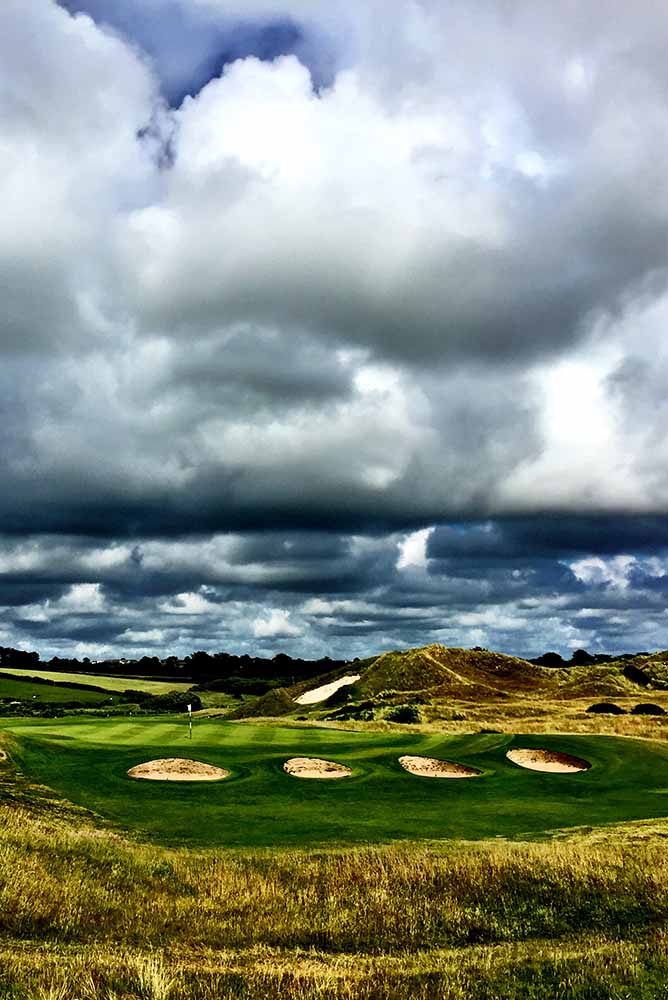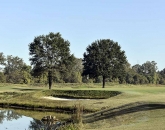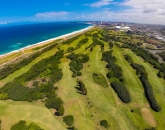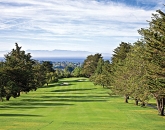
ST ENODOC
 Debate rages in 19th holes across Cornwall as to which is the better course: Trevose or St Enodoc? It's understandable as the two courses are only a few miles apart - St Enodoc can be found across the Camel Estuary from Padstow in the royal sailing town of Rock, home of Doombar beer - and both offer a tremendous golfing experience. But they are in truth quite different. While laid-back Trevose is a fully-fledged resort, St Enodoc is very much more of a private members' club in the traditional sense of the term. The wonderfully named GM, Tuck Claggett, is an ex-pat Yank and runs a tight ship. Set amidst towering sand dunes clad with wild sea grasses, the front nine of the James Braid designed Church Course here is a breathtakingly magnificent run of holes and affords a number of fine coastal views. The pick of the bunch - and one of the most wonderfully quirky holes anywhere - is the sixth, a mid-length par-four which features a blind drive and requires the approach shot to be played over a mammoth dune called "Himalayas" some 100 yards from the green. "Himalayas" is rumoured to be the biggest bunker in Europe - and at 75 feet high it almost certainly is. The back nine isn't as linksy as the front and while it has some memorable moments - the closing three holes provide a superbly challenging finish - the meadowland nature of some of a few of the early holes prevent St Enodoc from being rated higher. The course is named after a small church that stands to the right of the tenth green, which is the final resting place of John Betjeman, the Poet Laureate, who penned his famous poem Seaside Golf after a rare birdie at the thirteenth.
Debate rages in 19th holes across Cornwall as to which is the better course: Trevose or St Enodoc? It's understandable as the two courses are only a few miles apart - St Enodoc can be found across the Camel Estuary from Padstow in the royal sailing town of Rock, home of Doombar beer - and both offer a tremendous golfing experience. But they are in truth quite different. While laid-back Trevose is a fully-fledged resort, St Enodoc is very much more of a private members' club in the traditional sense of the term. The wonderfully named GM, Tuck Claggett, is an ex-pat Yank and runs a tight ship. Set amidst towering sand dunes clad with wild sea grasses, the front nine of the James Braid designed Church Course here is a breathtakingly magnificent run of holes and affords a number of fine coastal views. The pick of the bunch - and one of the most wonderfully quirky holes anywhere - is the sixth, a mid-length par-four which features a blind drive and requires the approach shot to be played over a mammoth dune called "Himalayas" some 100 yards from the green. "Himalayas" is rumoured to be the biggest bunker in Europe - and at 75 feet high it almost certainly is. The back nine isn't as linksy as the front and while it has some memorable moments - the closing three holes provide a superbly challenging finish - the meadowland nature of some of a few of the early holes prevent St Enodoc from being rated higher. The course is named after a small church that stands to the right of the tenth green, which is the final resting place of John Betjeman, the Poet Laureate, who penned his famous poem Seaside Golf after a rare birdie at the thirteenth.
Pages
Click here to see the published article.











